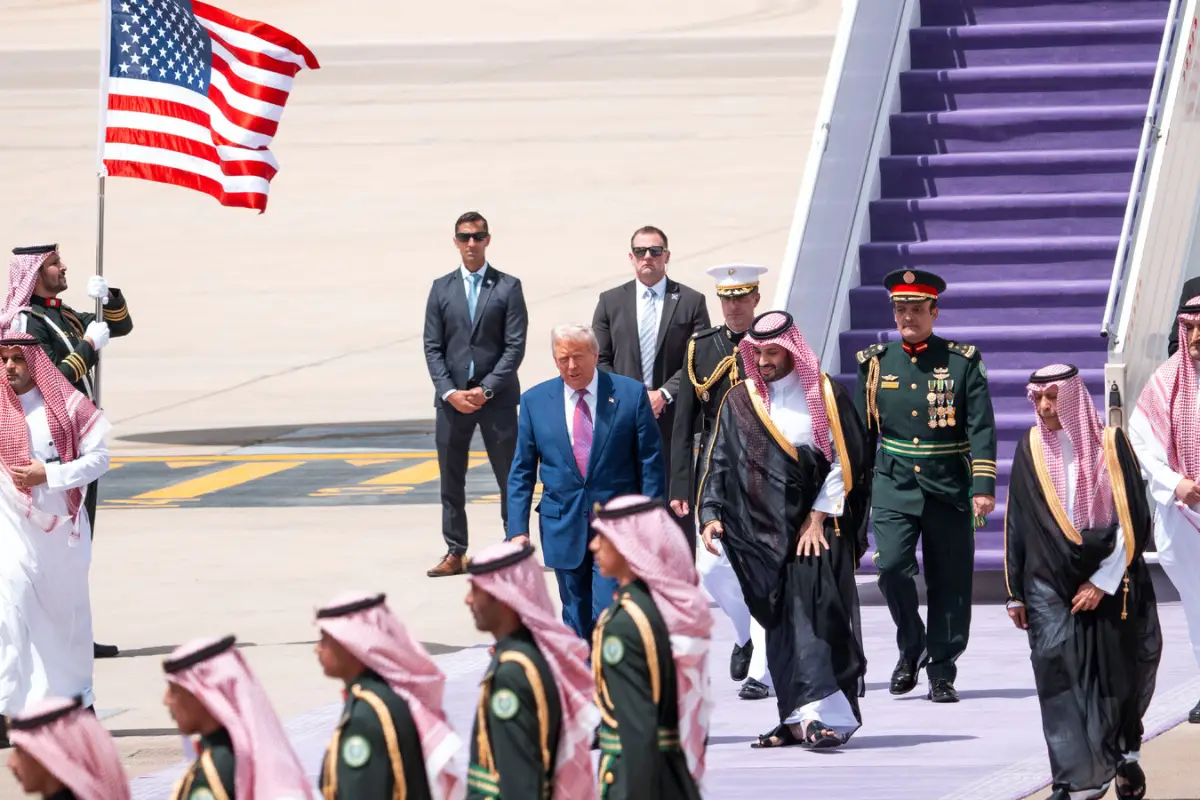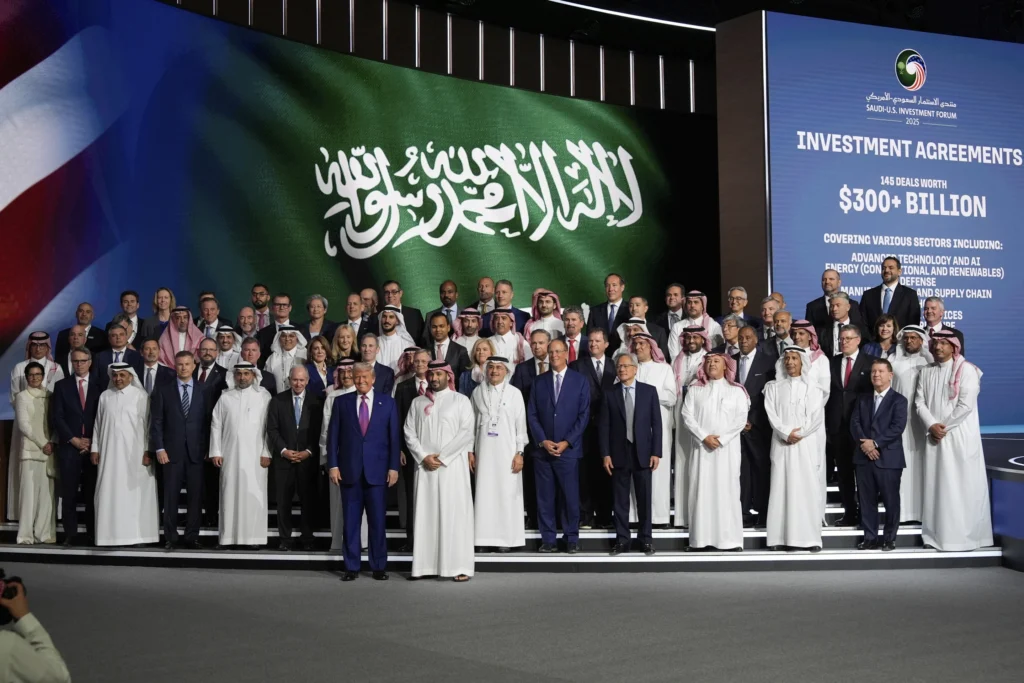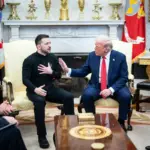Trump’s Saudi Arabia Visit Yields Major Business Deals, Strengthens Ties with Crown Prince

RIYADH, Saudi Arabia – President Donald Trump’s visit to Saudi Arabia on May 13, 2025, marked a triumphant start to his Middle East tour, delivering historic economic agreements and reinforcing a warm, personal bond with Saudi Crown Prince Mohammed bin Salman. The trip, focused on dealmaking and regional prosperity, showcased a revitalized U.S.-Saudi alliance, with both leaders celebrating their mutual trust and shared vision for economic growth.
A New Era of Economic Collaboration
The centerpiece of Trump’s visit was a staggering $600 billion investment commitment from Saudi Arabia into the United States, spanning energy, defense, technology, and infrastructure. Crown Prince MBS hinted at ambitions to scale this investment to $1 trillion, signaling a bold vision for bilateral economic ties. A historic $142 billion defense sales agreement—the largest in U.S. history—was signed, encompassing air force upgrades, missile defense systems, maritime security enhancements, and other military advancements.
The U.S.-Saudi Investment Forum in Riyadh drew prominent American business leaders, including Elon Musk of Tesla and SpaceX, Nvidia’s Jensen Huang, and BlackRock’s Larry Fink. Key deals included a $20 billion investment by Saudi company DataVolt to build AI data centers in the U.S., alongside $80 billion in tech commitments from companies like Google, Oracle, and Nvidia. Saudi Arabia also approved operations for Musk’s Starlink, expanding its technological footprint, while Nvidia and AMD agreed to supply AI chips to Saudi’s Humain AI company.
Strategic Partnership and Diplomacy
Beyond economics, the visit solidified a “strategic economic partnership” with agreements in diverse sectors, including energy, defense, mining, arts, and even zoology. Judicial and defense cooperation pacts were signed, fostering collaboration between the U.S. Department of Justice, the Pentagon, and their Saudi counterparts. Trump’s announcement to lift U.S. sanctions on Syria, in place since 1979, was a notable diplomatic move. During the visit, Trump briefly met with Syria’s new President, Ahmed al-Sharaa, expressing support for giving Syria “a chance at greatness.”
Strengthening U.S.-Saudi Ties
The personal rapport between Trump and Crown Prince Mohammed, often called “MBS,” was on vivid display. From a ceremonial F-15 escort for Air Force One to a lavish state dinner at the UNESCO-listed Ad-Diriyah, the Crown Prince broke protocol to personally greet Trump, a gesture of deep respect. “I like him too much,” Trump quipped, while MBS placed his hand on his heart, beaming at the president’s praise. “We really believe we like each other a lot,” Trump added, highlighting a bond that analysts dubbed a “bromance for the ages.”
The visit highlighted a personal rapport between Trump and MBS, building on their interactions during Trump’s first term. The warm reception, including ceremonial events, underscored Saudi Arabia’s strategic importance as a U.S. ally in the Middle East. The trip, part of a broader regional tour that included Qatar and the UAE, positioned Trump as a dealmaker prioritizing economic gains and regional stability.

Looking Ahead
Trump’s Saudi Arabia visit sets a precedent for his second term’s foreign policy, emphasizing transactional diplomacy and large-scale economic partnerships. The agreements are expected to create thousands of jobs in both nations and enhance technological and defense capabilities. However, the scale of these commitments and their long-term implications will depend on implementation and broader geopolitical dynamics.
As the U.S. and Saudi Arabia chart this ambitious course, the visit marks a significant step toward redefining their partnership in a rapidly evolving global landscape.
Sources:
-
-
President Trump received a dramatic fighter jet escort into Saudi Arabia on Air Force One https://youtu.be/zjzmfCMqSAo?si=JG6Q-WpHlJkuPIer
- Trump’s Historic Arrival in Saudi: Six F-15s Escort Air Force One in Close Formation for 30 Minutes https://youtu.be/vOLus3MjDUM?si=vnr2GRHkURiXr7-_
- President Trump received a dramatic fighter jet escort into Saudi Arabia on Air Force One https://youtu.be/zjzmfCMqSAo?si=RXGJf5ub5JMxXTOx
-





